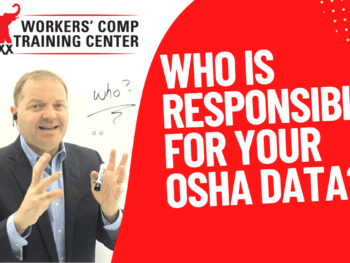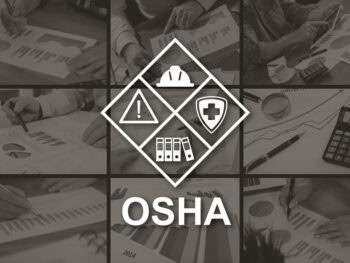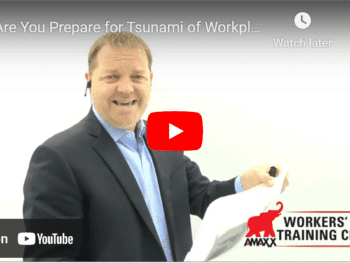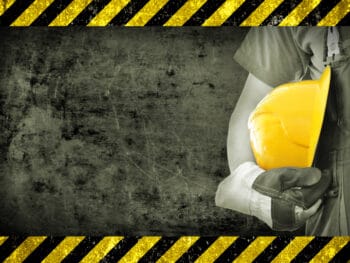If you ask most employers whether or not they work toward maintaining a safe work environment, the answer will likely be, “yes.” And statistics show that over the past several years, employers are doing a better job at keeping workers safe.
In fact, according to data released by the U.S. Bureau of Labor Statistics (BLS), the number of nonfatal, work related injuries and illnesses in 2010 totaled around three million. This continues a downward trend from 4.3 million in 2003*. Cases that involved lost workdays also fell from 2003 yet still exceeded 900,000, a significant loss of productivity.
It is clear that creating a safe work environment pays off , so it should be a top priority for every employer. Not only can a culture of safety lead to reduced injuries and workers compensation claims; but it can improve morale and increase productivity, as well. With a safe work environment, everybody wins, but it is up to management to create the framework and maintain a culture of safety.
A safe work environment can happen when you follow certain best practices that work, starting with assessing the workplace.
Assessing the Workplace for Safety
A safe work environment starts at the top. So the first step in assessment is to determine how management views safety. Questions, which may vary according to business size and industry, might include the list below.
- Does management clearly communicate its belief and safety expectations to employees?
- Is safety as important as production, sales, quality, technology and equipment?
- Are safety performance objectives and guidelines established?
- What are the rewards or consequences regarding these guidelines?
- Who is responsible for safety measures and how is ownership communicated throughout the organization?
A fully engaged management team is the foundation for creating a safe work environment. Next, it is time to eliminate hazards.
Increase Safety by First Focusing on the Basics
To perform the jobs, workers need to move, see, hear and breathe without risking injury or illness. During the work environment assessment, check each area for cleanliness, proper lighting and obstruction-free pathways. Look for leaking pipes, and cracked walls, floors and ceilings. Determine whether airborne chemicals, exhaust or smoke are entering the workspace. Identify the steps required to mitigate any hazards, and assign tasks to appropriate departments.
The Benefits of Job Planning to Increase Safety
Properly planning a job means fewer safety incidents. When expectations, time schedules, and equipment lists are clearly communicated, each team member knows what is required to complete a project safely and on time. Every job planning exercise should include identifying potential safety hazards, so they can be avoided. Remember that “rush” jobs often lead to worker shortcuts, lack of or improper use of safety equipment, and accidents and injuries.
Look Back to Improve Future Workplace Safety Performance
During an assessment, it is important to gather data for review. Many organizations seeking to improve workplace safety assign personnel to observe projects and tasks to identify safety hazards – both planned-for and unexpected. Examples of hazards might include
- Missing or inoperable safety equipment.
- Damaged tools or machinery.
- Workers failing to follow safety procedures.
- Poor maintenance practices.
Review the data with a goal of identifying problems, needed repairs, equipment upgrades and training opportunities; then develop an improvement plan for each area.
Aim for Continuous Safety Improvement
To continue the downward trend of workplace injuries and illnesses and control workers compensation claims, employers must make workplace safety an integral part of an organization’s culture. Here are a few tips for developing a safety culture.
Create awareness by putting safety front and center, to ensure everyone knows its importance to the organization. Hold meetings, hang signs and banners, place stickers on equipment and create contests. Include safety tips in company messages, newsletters, videos and other means of communication.
Take a team approach by involving employees and promoting a sense of shared responsibility. Solicit each employee’s help and ideas. Make sure managers are as well versed in safety as they are in production, sales and quality.
Be proactive: When hiring, evaluate a candidate’s safety awareness. Create a workforce that is familiar and comfortable with safety procedures.
Offer training: Whether employees are new or long-term, each should undergo safety training. Ongoing refresher training is also necessary to improve performance and maintain awareness.
Incentivize employees: Rewarding employees for safety, as well as for productivity, demonstrates a real commitment to workplace safety.
Put it in writing: Regularly update all employee manuals and safety for policy changes, new equipment, procedure revisions and regulations.
Be patient: Creating a safety culture takes time and continued effort. It may be a few years before your organization’s new safety-oriented culture takes hold. But the results will be worth it! (WCxKit)
A Safe Work Environment Works for Everyone
Reducing workplace illness and injuries makes good business sense. Increasing productivity and reducing resources spent on workers compensation claims means a stronger bottom line no matter what the business.
Even more important is the satisfaction and quality of life that employees can enjoy when safety becomes part of your organizational culture. Performing their jobs safely, and knowing their employer cares enough about them to take it seriously, can really boost morale. When every employee leaves work as healthy as when they arrived, then management has achieved an important goal.
This post was provided by Erin Palmer on behalf of Villanova University’s online human resources programs. Villanova offers a Masters degree in HR, as well as HR training certificate programs. Erin can be reached on Twitter @Erin_E_Palmer.
Our WORKERS COMP BOOK: www.WCManual.com
WORK COMP CALCULATOR: www.LowerWC.com/calculator.php
MODIFIED DUTY CALCULATOR: www.LowerWC.com/transitional-duty-cost-calculator.php
WC GROUP: www.linkedin.com/groups?homeNewMember=&gid=1922050/
SUBSCRIBE: Workers Comp Resource Center Newsletter
Do not use this information without independent verification. All state laws vary. You should consult with your insurance broker or agent about workers comp issues.
©2011 Amaxx Risk Solutions, Inc. All rights reserved under International Copyright Law. If you would like permission to reprint this material, contact















Thank you so very much for your tips on creating a safe work environment. I’d imagine that risk identification is a major part of safety. If you know where danger comes from, you can work to curb it.